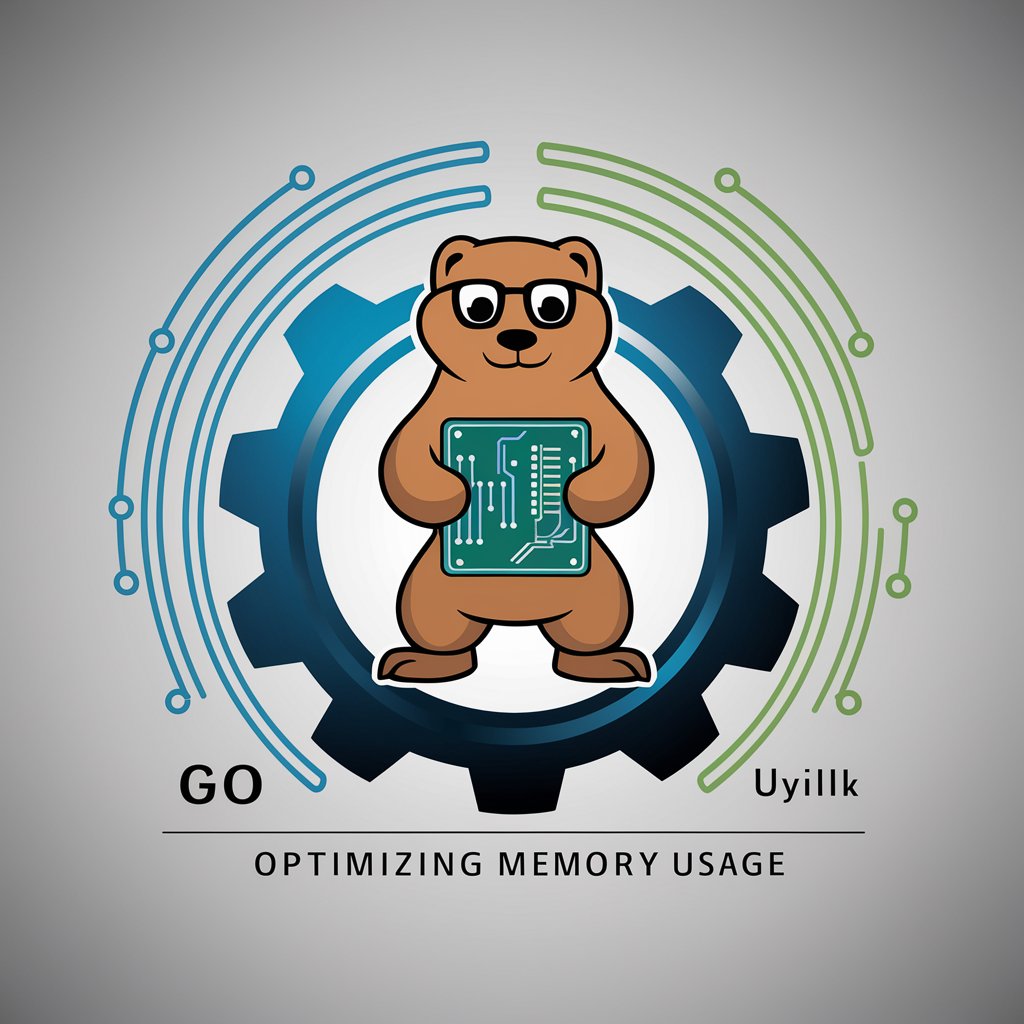Go's Memory: An Expert Guide - Go Memory Management Expertise

Welcome! Let's optimize your Go application's memory usage together.
Optimize Go Memory with AI-Powered Insights
Analyze the memory usage of your Go application using profiling tools like pprof...
Optimize your Go application's garbage collection strategy to improve performance and reduce memory footprint...
Explore efficient data structures and algorithms to enhance memory management in Go...
Implement best practices for variable scope management to minimize memory leaks in Go applications...
Get Embed Code
Introduction to Go's Memory: An Expert Guide
Go's Memory: An Expert Guide is designed to assist software developers in optimizing memory usage within Go applications. It encompasses a comprehensive understanding of Go's memory management mechanisms, including garbage collection, efficient data structure usage, and memory profiling. The guide's design purpose is to reduce the memory footprint of Go applications while enhancing or maintaining performance levels. Through systematic analysis, strategic code refactoring, and leveraging Go's concurrent programming model, the guide aims to balance memory efficiency with application performance. For instance, it offers insights on using Go's built-in pprof tool to identify memory bottlenecks and advises on restructuring data models to reduce memory allocation and GC overhead. Powered by ChatGPT-4o。

Main Functions of Go's Memory: An Expert Guide
Memory Profiling
Example
Using pprof to analyze heap allocations and identify memory leaks.
Scenario
A web service in Go experiencing unexpected spikes in memory usage. The guide would detail steps to use pprof for capturing and analyzing heap profiles, pinpointing excessive memory allocations.
Optimizing Data Structures
Example
Refactoring slices and maps to minimize memory overhead.
Scenario
Optimizing an in-memory cache system to use less memory per entry, thereby allowing more data to be stored in the same amount of RAM.
Garbage Collection Strategies
Example
Adjusting GC parameters based on application workload.
Scenario
A real-time application requires low latency. The guide would explain how to adjust the GC cycle to reduce pause times, ensuring smoother operation.
Concurrency Model Utilization
Example
Designing concurrent algorithms that reduce memory usage.
Scenario
Developing a high-throughput, concurrent data processing system that efficiently uses memory to handle large volumes of data without increasing GC pressure.
Ideal Users of Go's Memory: An Expert Guide
Software Developers
Developers writing Go applications seeking to improve performance by optimizing memory usage. They benefit from in-depth analysis, practical optimization strategies, and examples of memory-efficient coding practices.
Systems Architects
Architects designing large-scale, high-performance Go systems. They can leverage the guide to ensure their architectures are memory-efficient, scalable, and maintainable, aligning with best practices for memory management.
Performance Engineers
Engineers focused on squeezing the highest performance from Go applications. They will find the detailed profiling, benchmarking, and optimization techniques invaluable for meeting stringent performance targets.

Guidelines for Using Go's Memory: An Expert Guide
Step 1
Visit yeschat.ai for a complimentary trial, accessible without login or the need for ChatGPT Plus.
Step 2
Familiarize yourself with Go's memory management concepts, such as garbage collection, data structure optimization, and profiling tools, to fully leverage the guide.
Step 3
Run memory profiling on your Go applications using tools like pprof to identify potential areas for optimization.
Step 4
Apply the strategies and best practices recommended in the guide, such as efficient data structures and minimizing garbage collection overhead, to your code.
Step 5
Regularly benchmark and test your Go applications after applying changes to ensure improved memory efficiency and performance.
Try other advanced and practical GPTs
JavaScript Mysteries: A Comprehensive Guide
Unlock JavaScript secrets with AI-powered guidance.

Equity Analyst
AI-Powered Financial Insights at Your Fingertips

Strategist Insight
AI-powered Geopolitical Strategy Analysis

Hexus Video Transformer
Transform video content into engaging blogs with AI.

Unlock Go's Secrets: Pointers & Values Unleashed
Demystifying Go's pointers and values with AI

Rust Revolution: Elevate Your Code with Efficiency
Empower your code with Rust's efficiency

Personal Stand-Up Comedian
AI-powered personal comedy writer

Weather Channel
Precision Forecasting with AI

Dream Interpreter & Art🌠
Visualize your dreams, explore your subconscious

Essay Grader | Analyze essays with AI
Enhancing essays with AI-powered analysis

Write Me an Essay
Elevate Your Writing with AI Power

Veggie Veda
Elevate your culinary art with AI-powered vegetarian recipes.

Frequently Asked Questions about Go's Memory: An Expert Guide
What is Go's Memory: An Expert Guide?
It's a specialized tool designed for optimizing memory usage in Go applications, offering insights into efficient data structures, garbage collection, and profiling techniques.
How can this guide help in reducing memory leaks?
The guide provides strategies for identifying and fixing memory leaks, focusing on best practices in variable scope management and proper memory allocation patterns.
Can it help in improving Go application performance?
Yes, by optimizing memory usage, it indirectly enhances application performance, especially in high-load scenarios.
Is knowledge of Go's profiling tools required to use this guide?
Basic familiarity is beneficial, but the guide also offers guidance on using and interpreting data from Go's profiling tools.
Does the guide offer tips for code maintainability while optimizing memory?
Absolutely, it balances memory efficiency with code clarity, emphasizing maintainable and readable code alongside performance improvements.
